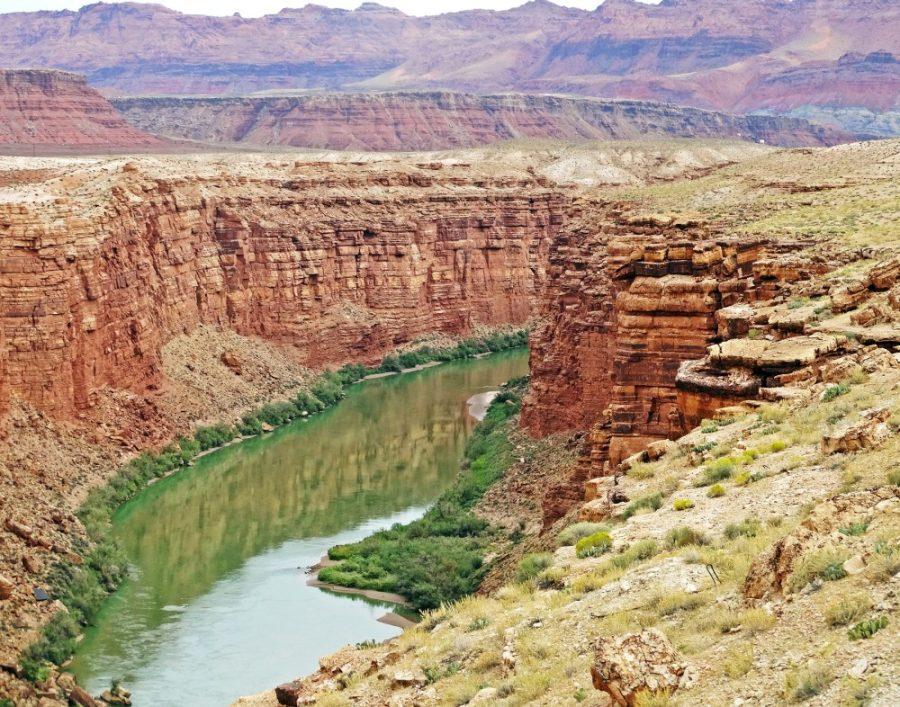Researchers from the University of Arizona developed a desalination bus for remote Navajo residents living without infrastructure.
“The motivation for the bus was two-fold,” said Bob Arnold, professor of chemical and environmental engineering at the UA. “First, there are quite a few places in the Navajo nation and other places in the state where individual homes or clusters of homes cannot be tied into a central grid infrastructure.”
Arnold said the extremely low population density in these areas make it fiscally unlikely for them to ever be included in a communal water or energy system. This is part of the importance of the bus.
The other purpose for the construction came from a federal grant given to the researchers working on the project.
“We intended to make a couple of demonstration projects, funded by the U.S. Department of Agriculture,” Arnold said. “So what we decided to do was to bring the systems to the wellheads, where demonstrations could be observed. That is what required the bus.”
RELATED: Minute 323 agreement between U.S. and Mexico ensures water sharing until 2026
Arnold, along with other UA researchers and a private firm, APEX Applied Technology, owned in part by a UA engineering graduate, constructed and brought two functional units to the Navajo reservation near Flagstaff.
One unit is currently in use on the Navajo nation at a family farm that was interested in desalinating and purifying water to grow crops.
“It’s at the North Leupp Family Farm, which is a co-op where residents of Leupp, a town of about 2 or 3 thousand on the reservation, can go and raise vegetable crops,” Arnold said.
The other, according to Arnold, is now owned by Service To All Relations school. This charter school is attended primarily by Navajo children, Arnold said.
The school focuses on environmental quality and sustainability. They plan to show residents living in remote areas the benefits of purified water and the cost-effectiveness of doing so, according to Arnold.

In order to know how it works, one must understand the concept of osmosis, Arnold said. The concept involves solutes, which are the dissolvable parts of a solution. In the body, that solution is mostly water.
“All your cells like to trap a variety of solutes so that they can conduct their metabolic business,” Arnold said. “And [the cells] would be very unhappy if, once they accumulated all these molecules, were able to slip across the membrane and escape.”
In order to reach a point of balance between the pressure inside and outside of the cell, water is forced in or out of the cell across the membrane, which won’t allow for solutes to pass.
“So that works just the opposite of how you’d like a clean water system to work,” Arnold said. “But you can reverse that process by creating a system pressure inside that’s larger than the osmotic [pressure].”
In turn, this allows for the nano-filtration membranes, or “clean cells,” to extract clean water from a saline slurry. However, the purpose is not to extract all the solutes for drinking purposes, rather extract most of them for the purpose of agriculture.
“The water is slightly more saline than you’d like to drink,” Arnold said. “If we can get 50 to 75 percent of the salt out of it as it crosses the membrane, then we’ve done our job.”
RELATED: Arizona Insect Festival generates buzz around pollinators
Traditional desalinators require a lot of energy to work, and none of the places that developers plan to bring the systems have a central power grid.
“Solar or wind are the best options,” Arnold said. “We also feel that the byproducts would be useful in agriculture.”
These systems were delivered to the reservation on Sept. 7 and demonstrations have already begun. Arnold said the next steps in this initiative depend on the interest that the desalination bus can create.
“If anybody wants to pursue it there, on the Navajo reservation or other places in the state, what it’s going to require is an initial influx of capital,” Arnold said. “We would hope over some recovery period, maybe 5 to 10 years, from the saline water we could produce the next generation of instruments capable of producing clean water.”
Follow Chandler Donald on Twitter















